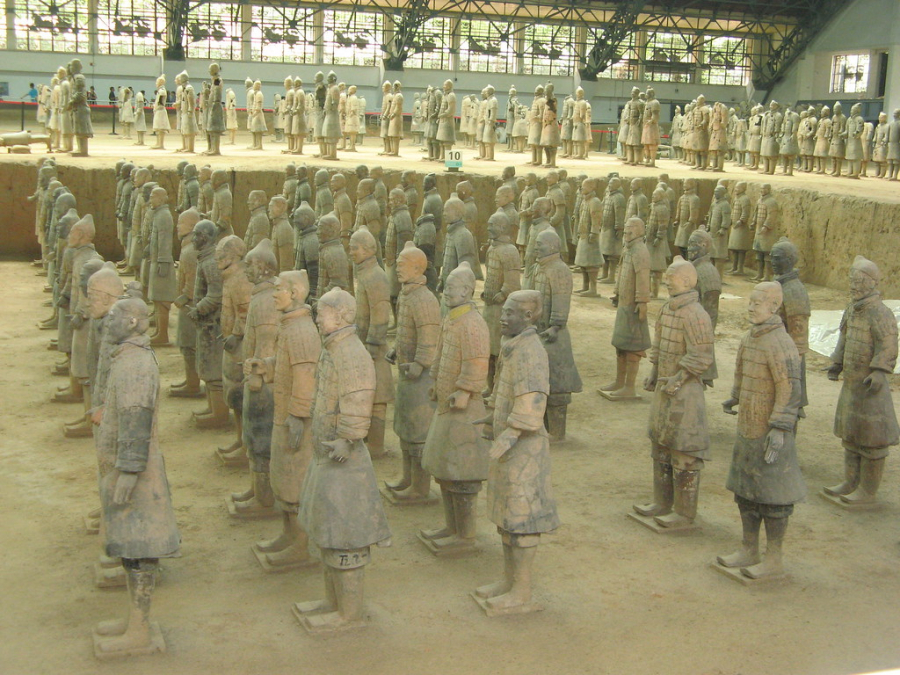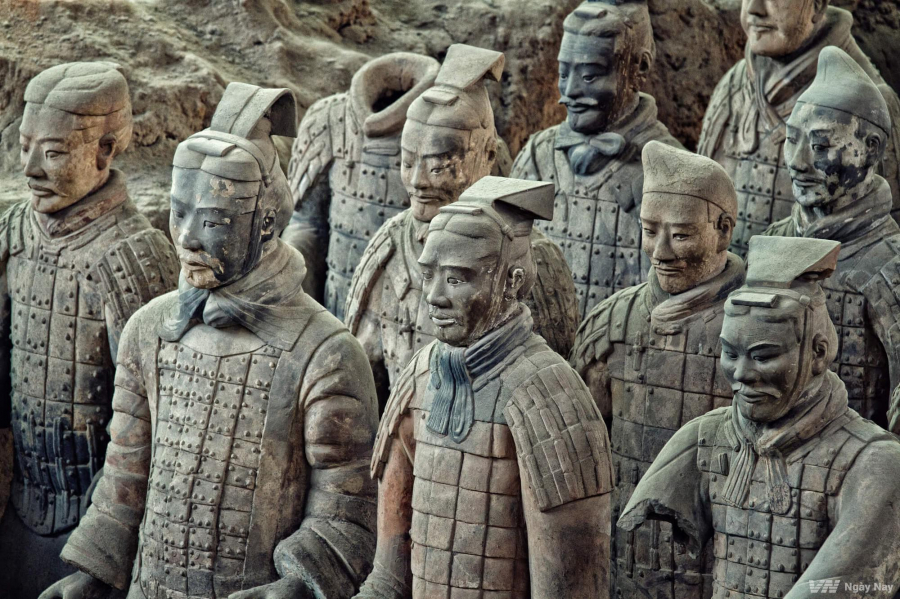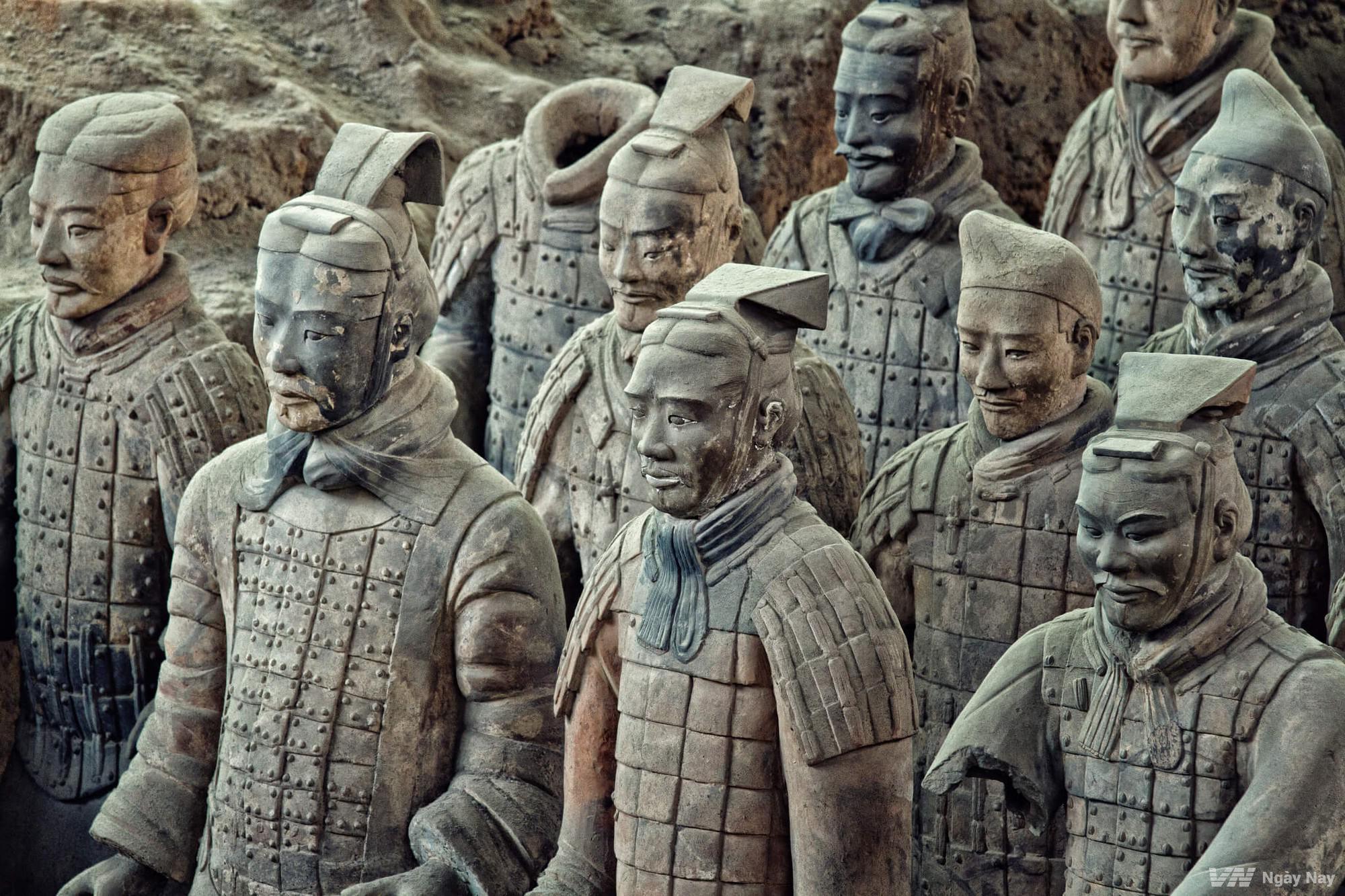Xi'an is one of the four capitals in Chinese history, the capital of 13 dynasties, including: Zhou, Qin, Han and Tang. Xi'an is also the eastern terminus of the legendary Silk Road.
The Terracotta Warriors and Horses Museum in Xi'an is one of the greatest archaeological discoveries of the 20th century. Discovered in 1974, it is a crypt of 8,000 warriors, horses and some 10,000 skillfully sculpted bronze weapons dating back to the 3rd century BC.
This tomb belonged to the first emperor of China - Qin Shi Huang. In 1975, China established a 16,300 m2 museum2right above the Binh Ma Dung tunnels serving the research and preservation of relics that have been listed by UNESCO as a world cultural heritage. Binh Ma Dung is considered the 8th wonder of the world.

Designer Adrian Anh Tuan at the tomb of Binh Ma Dung. Photo: @adriananhtuan
The Terracotta Warriors, also known as the Terracotta Army of Qin Shi Huang, are thousands of hand-carved terracotta warriors built next to the mausoleum to protect Qin Shi Huang after his death. Construction began in 246 BC and took 700,000 workers and craftsmen over 38 years. According to historical records, in order to keep information about the tomb's entrance and its contents secret, the Qin Dynasty killed all the forces involved in building the mausoleum by blocking the entrance and burying them alive, as well as killing some of the people involved in the burial.
However, after more than 2,000 years of keeping this secret, in March 1974, local people digging a well in the pomegranate and persimmon fields accidentally found the mausoleum. What was found here was one of the biggest archaeological discoveries of the 20th century. Buried under the fields at a depth of 5 meters were thousands of terracotta warriors skillfully carved from the 3rd century BC during the reign of Qin Shi Huang - the first Emperor of a unified China.

The terracotta statues are extremely lifelike, ranging from 1.8 to 1.95 meters high, with different hairstyles, costumes, and weapons. The statue of the commanding general is the tallest. Each statue has its own, very lively facial expression. The statues of soldiers and horses stand majestically, lined up in very orderly rows, demonstrating the powerful military potential of the Qin Dynasty.


So far, archaeologists have discovered three pits containing 8,000 terracotta warriors, 130 chariots and 520 horses, but these artifacts represent only a small part of the entire army. The rest remains buried and unexplored.

In 1975, China established a 16,300 m2 museum.2right above the Binh Ma Dung tunnels serving the research and preservation of relics that have been listed by UNESCO as a world cultural heritage. Binh Ma Dung is considered the 8th wonder of the world.

After visiting the tomb of Qin Shi Huang, designer Adrian Anh Tuan continued to enjoy a historical play considered one of the most beautiful plays in the world, performed at a theater right in this historical site.

The grandeur and grandeur of the historical play left the designer stunned and not wanting to leave. Photo: Adrian Anh Tuan
3 days in Xi'an with mysterious historical discoveries completely captivated the young designer, he determined that he will soon have to return here to continue his journey of discovery in the near future.


































